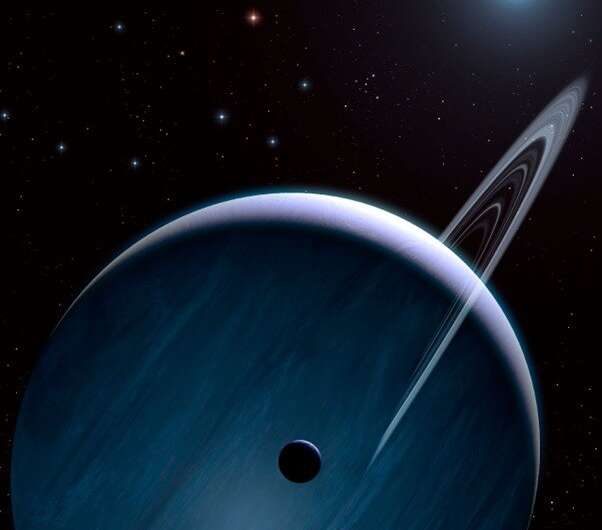The team of scientists who discovered the so-called BEAST exoplanets explained their possible origin. The massive stars around which they revolve could “steal” them from other luminaries even in the “star cradle”.

What is a BEAST-planet
The name of the BEAST planets comes from the space exploration program B-star Exoplanet Abundance STudy, in which they were discovered. They are one of the latest additions to the “zoo” of worlds outside the Solar System and once again prove that the diversity of star systems in the Universe is extremely large.
All BEAST planets are massive Jupiter-like gas giants orbiting massive and hot stars. At the same time, their orbits have a radius hundreds of times larger than Earth’s. That is, if these planets existed in the Solar System, they would be somewhere in the Oort Cloud, far beyond the orbit of Neptune.
A small mystery is connected with these celestial bodies. The fact is that massive stars have intense ultraviolet radiation, effectively “blowing out” gas from their surroundings. Therefore, planets near them can form, but they have no chance of growing to the size of Jupiter.
How stars steal giant planets
Scientists were able to explain how BEAST planets can appear where they are found. They suggested that during their stay in protoplanetary clouds, which play the role of “stellar cradles”, massive stars can “steal” gas giants from their lighter “relatives”.
The researchers conducted a simulation of the interaction of star systems inside the “cradle” and came to the conclusion that massive stars really have sufficient gravitational influence to “steal” giant planets. Moreover, such events should occur at least once every 10 million years, and as a result, celestial bodies should be exactly in the orbits in which they were found by the BEAST team.
It should also be noted that in terms of classical celestial mechanics, the fascination with the stars of planets looks extremely unlikely. But in the nebula, when the resistance of the medium has a huge impact, it becomes possible not only to capture planets, but also the formation of binary systems.
According to phys.org
Follow us on Twitter to get the most interesting space news in time
https://twitter.com/ust_magazine
